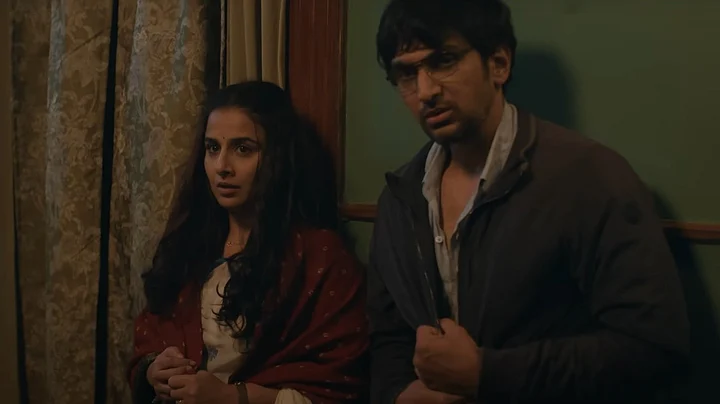Do aur Do Pyaar begins with a striking yet unsettling quote about the traditional Indian mindset by Groucho Marx - “Marriage is a wonderful institution, but who wants to live in an institution?”
In a country where the idea of dreams, freedom, prosperity, death, company and many other adjectives are inexplicably linked to the institution of marriage, Do aur Do Pyaar is indeed a fresh take on the institution from a raw and an upper-class point of view.
As I sat in the theatre to watch the movie with a big box of popcorn and drinks, I had to squirm my eyes at first to adapt to the low brightness of the movie. It was the exact brightness that we all wished to have on our phones when we were in our doom-scrolling mode dead in the night. The director seems to have gone for a ‘Gehraaiyan' like approach with an overall blue tint to the entirety of the movie.
What starts as rather harmless love stories of two happy-looking couples, sends the audience on a rollercoaster. The movie adopts a parallel storyline approach with a centre focus on Ani Banerjee (Pratik Gandhi) and Kavya Ganeshan (Vidya Balan) who lead a boring and monotonous marriage inside the house with refreshing and orgasmic (if I may) affairs outside.
Kavya Ganeshan, who comes from a privileged family, is a dentist in Mumbai and is married to her college sweetheart, Ani Banerjee who runs a cork (not cock as he repeats) factory.
15 years into the relationship and 12 years into marriage, both of them are waiting to break out of the institution but lack the confrontational strength. Kavya looks seemingly happy with Vikram (Senthil Ramamurthy), a photographer by profession, who has travelled across the world and yet finds a home in Kavya, while Ani is with Nora, who is an upcoming actor.
As the movie progresses, the audience is led into the intricate minds and choices of the couple. While Ani finds Kavya’s decisive and dominant character to be suffocating, Vikram submits to it and is rather comfortable. On the other hand, Nora gracefully accepts Ani's dominant role in the dynamics.
Towards the intermission of the movie, Kavya is informed about her grandfather’s demise which leads to the couple travelling back to Ooty and also results in patching up the estranged relationship the protagonist has with her family since she ran away with Ani. Sprinkled with a few jokes around inter-community marriage and the awkward dynamics of Ani and Kavya’s family, the movie also paves the way for some age-old stereotypes.
One thing that stood out was that despite Kavya’s family being settled in Ooty, they refuse to speak in Tamil except for the occasional words just to make sure that the audience does not forget the Tamil lineage. Call it an attempt to equate education with speaking English or a desperate attempt to not let the Hindi audience feel excluded, they could have done better.
The romance between the couple is rekindled here with all the memories of their dating life coming back. The house that is mourning a death soon becomes the set for a steamy romance session that leaves you smiling for sure. Plus, apart from casting some of the most underrated actors in the industry, the makers have done a fabulous job with the designing of Balan’s costumes too. (I mean how can someone look so good in sarees!?)
Just when you think everything is going well enough, the makers take you down the rabbit hole of everything going wrong. From steel utensils to Ani’s grandmother’s famous Beygun Pashto, everything is called names and hated. The makers have done an excellent job in moulding the characters to feel human-like.
Nowhere in the story, with respect to their actions and their thoughts, does the audience get the feeling of watching a typical extra-dramatic Bollywood movie. The reality of inter-community marriages and marriages in general as couples struggle to sacrifice and reach common ground is very well depicted.
A remake of a Hollywood movie The Lovers, Do aur Do Pyaar attempts to strike a chord of relatability and visual aesthetics. However, you can never take Bollywood out of a Bollywood movie, can you? The almost forcible entry of a Bollywood happily-ever-after ending leaves me with a mixture of emotions. While it was good to show the happy reconciliation in the end, it would have been perfectly fine for them to move on with their lives too. A rather refreshing storyline, Do aur Do Pyaar could have been a chaar star but lacks the colour for it.
(Gopika Nair is a student pursuing masters in Mass Communication at USMC, GGSIPU.)
(At The Quint, we question everything. Play an active role in shaping our journalism by becoming a member today.)
